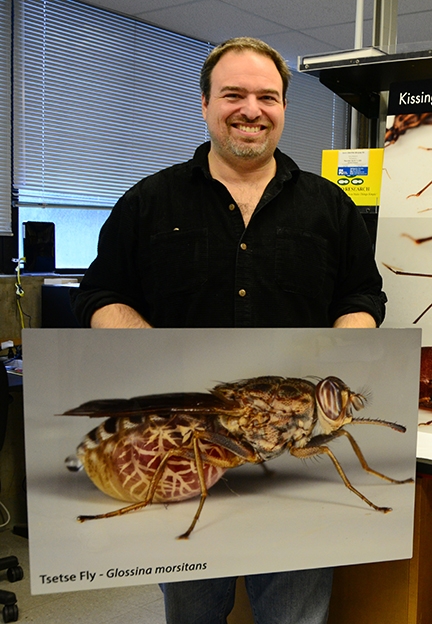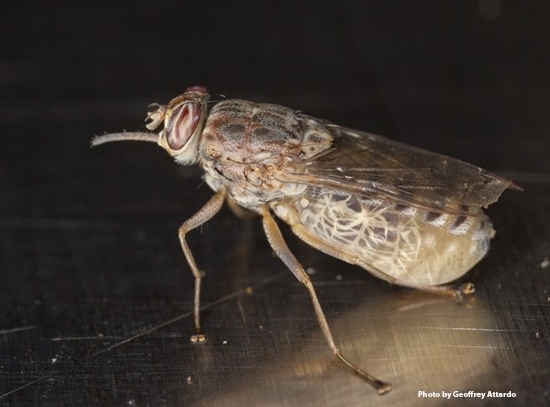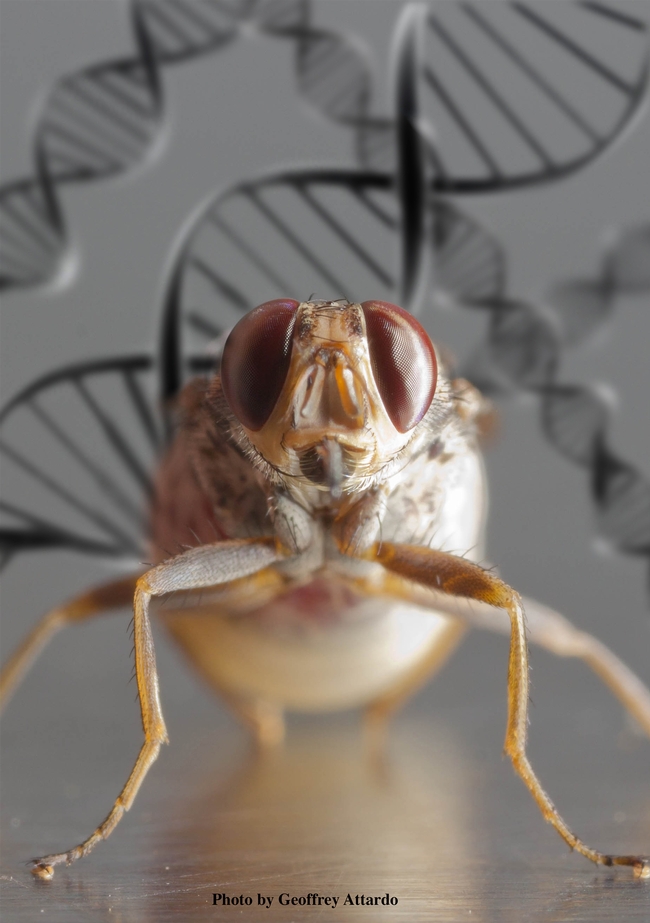
But if you're UC Davis entomologist-geneticist Geoffrey Attardo, you do.
He led landmark research published Sept. 2 in the journal Genome Biology that provides new insight into the genomics of the tsetse fly, an insect that transmits the parasite that causes human and animal trypanosomiasis. In humans, it's commonly known as sleeping sickness, and if not treated, it's fatal.
Tsetse flies, Glossina sp., are of great medical and economic importance, wrote Attardo and co-authors Adly M. M. Abd-Alla of the Insect Pest Control Laboratory, Division of Nuclear Techniques in Food and Agriculture, Vienna, Austria, and Serap Aksoy of the Yale School of Public Health, New Haven, Conn. They related that since the implementation of surveillance and record-keeping in the 20th century, “millions of people in sub-Saharan Africa” have died from sleeping sickness.
Their research compares and analyzes the genomes of six species of tsetse flies and could lead to better insights into disease prevention and control. “It was a behemoth project, spanning six to seven years,” said Attardo, an assistant professor in the Department of Entomology and Nematology. “This project represents the combined efforts of a consortium of 56 researchers throughout the United States, Europe, Africa and China.”

“The aim of these studies,” the authors wrote, “was to generate and mine the genomic sequences of six species of tsetse flies with different ecological niches, host preferences, and vectorial capacities. The goals of the analyses performed here are to identify the novel genetic features specific to tsetse flies and to characterize the differences between the Glossina species to correlate the genetic changes with phenotypic differences in these divergent species.”
“Expanded genomic discoveries reveal the genetics underlying Glossina biology and provide a rich body of knowledge for basic science and disease control,” the scientists concluded. “They also provide insight into the evolutionary biology underlying novel adaptations and are relevant to applied aspects of vector control such as trap design and discovery of novel pest and disease control strategies.”
Attardo, who joined the UC Davis faculty in 2017 after serving 13 years with the Yale School of Public Health, said the massive research project involved “the complete sequencing and assembly of six Glossina species, including the two primary vectors of human African tryapnosomiasis, three major vectors of animal trypanosomiasis and one ancestral tsetse species which demonstrates some resistance to the species of trypanosomes responsible for human and some animal forms of the disease.”

- A clearer definition of the Glossina phylogenetic tree and placement of a controversial species.
- Identification of rapidly evolving regions of the tsetse genome relative to Drosophila.
- Identification of Glossina specific genes and their functions as well as expansions and contractions of gene families in tsetse relative to other flies.
“We discuss the functional implications of these changes and how they relate to tsetses' physiological adaptations and evolutionary history,” Attardo noted.
“We discovered that the rhodopsin gene family which is associated with vision/color detection shows conservation in motion detection and tracking associated genes.” Attardo said. “However, the gene coding for the protein that detects blue wavelengths is divergent relative to houseflies and shows the highest variance between Glossina species of all the rhodopsin genes. This is significant as the color blue is used as an attractant to bring tsetse into the traps used for control. It suggests that different species may be tuned/attracted to different wavelengths of blue.”
They also analyzed the genes associated with tsetse immunity and the relative differences in comparison with houseflies and fruit flies. “We see many immune genes missing in Glossina and increased copy numbers of genes associated with negative regulation of immune function. We think this may be associated with the evolution of obligate symbiosis as a way to protect their symbionts.”
“We also found extreme conservation of milk proteins between all sequenced species,” the UC Davis medical entomologist said. “On the flip side, male reproductive proteins (seminal proteins) appear to be very rapidly evolving relative to the rest of the genome. The copy numbers of these genes also change significantly between species.”
The scientists also found an overall reduction of olfactory associated genes and protein modifications specific to salivary proteins in the two species that vector human trypanosomiasis.
In 1995, the World Health Organization (WHO) estimated that 60 million people were at risk of sleeping sickness, with an estimated 300,000 new cases per year in Africa, and fewer than 30,000 cases diagnosed and treated. Due to increased control, only 3796 cases were reported in 2014, with less than 15,000 estimated cases, according to WHO statistics.
The parasitic disease “mostly affects poor populations living in remote rural areas of Africa,” according to WHO. “Untreated, it is usually fatal. Travelers also risk becoming infected if they venture through regions where the insect is common. Generally, the disease is not found in urban areas, although cases have been reported in suburban areas of big cities in some disease endemic countries.”
Several National Institutes of Health (NIH) grants, awarded to Attardo and Aksoy, funded the research. They also drew funding from the McDonnell Genome Institute at Washington University School of Medicine; the National Research Foundation, the Swiss National Science Foundation, and the Slovak Research and Development Agency.
Related Links:
Attached Images:
